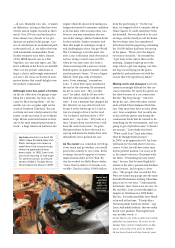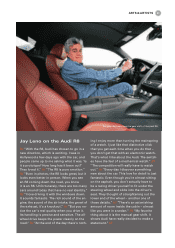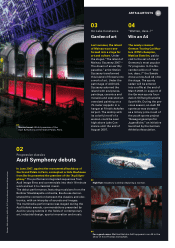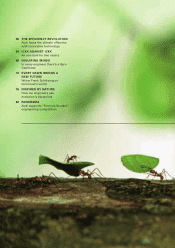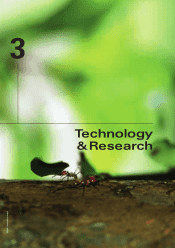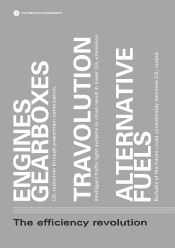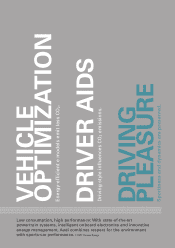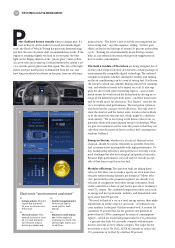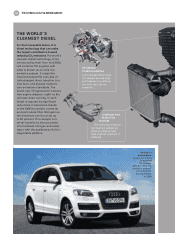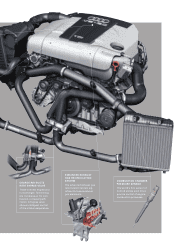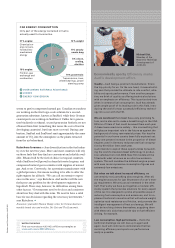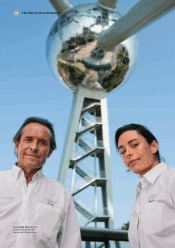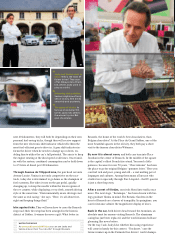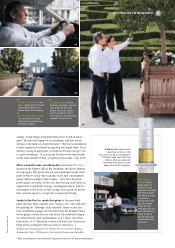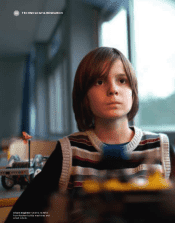Audi 2007 Annual Report Download - page 60
Download and view the complete annual report
Please find page 60 of the 2007 Audi annual report below. You can navigate through the pages in the report by either clicking on the pages listed below, or by using the keyword search tool below to find specific information within the annual report.
point of view. “The driver’s foot is still the most important fac-
tor in saving fuel,” says this engineer, adding: “Correct gear
shifts can lead to fuel savings of around 30 percent in the urban
cycle.” Training for environmentally aware driving can also
help, as can onboard electronics that provide suggestions on
how to reduce consumption.
The Audi e models of the future are being designed for ef-
ficiency and will provide their drivers with a whole package of
environmentally compatible digital technology. The onboard
computer calculates whether closing the window and turning
on the air conditioning can be a way of saving fuel. It tells you
the extent to which rear-window heating affects fuel consump-
tion, and whether it needs to be turned on at all. It also sup-
plies the driver with some interesting figures – such as how
much sooner he would reach his destination by driving an av-
erage of ten kilometers per hour faster – and how much more
fuel he would need. An electronic “Eco Trainer” rates the dri-
ver’s overall on-road performance. The navigation system is
also based on the concept of fuel efficiency. Not only does it
show the shortest and the fastest route, but also what is likely
to be the most fuel-efficient one, which might be a different
road entirely. “We’re not trying to tell drivers what to do, or
patronize them with annoying and invasive technology. What
we give our customers are the tools they need so that they can
take their own decisions on how to reduce fuel consumption,”
explains Gebhard.
Energy in the car, whether it is electrical, thermal or me-
chanical, should be used as efficiently as possible. However,
fuel economy is not incompatible with high performance. To-
day, harmonizing efficiency and sportiness is not only a tech-
nical challenge but also an ecological and political necessity.
Because high-performance cars will only be socially accept-
able if they learn to get by on less fuel.
Modular efficiency. The question Audi are asking them-
selves is this: How can we make a sporty car even more fuel-
efficient without losing dynamic performance? Motor vehi-
cles, particularly in the premium segment, are already very
efficient in comparison with other energy consumers. Road
traffic contributes a share of just twelve percent to Germany’s
total CO2output. The combined output from other areas such
as energy and heat generation, industry, and households adds
up to more than 80 percent.
“We need to think of a car as a total energy system, then make
adjustments in all the areas we can reach,” is Gebhard’s suc-
cinct analysis. In the past, this has worked well: A current A6
consumes 35 percent less fuel to generate one kilowatt of
power than its 1990s counterpart. In terms of consumption
figures – which are essentially proportional to CO2emissions
– a present-day Audi A4 can easily compete with mass pro-
duced cars from a lower vehicle category. The target for the
near future is clear: By 2012, AUDI AG intends to reduce the
CO2emissions of its fleet by a further 20 percent.
58 TECHNOLOGY& RESEARCH
eter Gebhard knows exactly when to change gear. It’s
part of his job. At the Audi test circuit just outside Ingol-
stadt, the Head of Vehicle Testing has great fun demonstrating
just how the new electronic shift recommendation works. If the
engine is straining slightly too hard in a lower gear, the blue
light on the display (known as the “power glow”) turns yellow.
An arrow tells you to shift up. Gebhard follows the system’s ad-
vice, and the power glow turns blue again. The size of the light
shows you how much power is demanded from the car, and
how long you should accelerate in this gear, from an efficiency
01
Instant advice: Should
I open the window?
Or turn on the air con-
ditioning?
03
The eco trainer: This
awards points for over-
all on-road behavior.
Full throttle means
points are deducted.
02
Comfort requirements:
How much fuel is
used just for well-
being?
04
Electronic shift indica-
tor: If the engine is
straining too hard, the
yellow light warns you
to shift up.
Electronic “environment assistant”
0201
03 04
P




